"Bunnies & Buns" by Tricia Tillin
What is Easter?
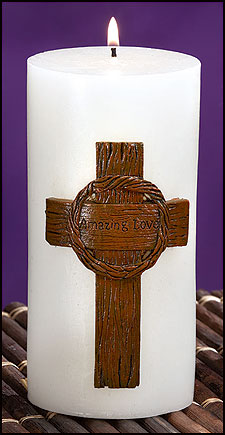 Why am I writing this article? Having written a treatise on Christmas (here) I thought it might be good to do the same for Easter.
Why am I writing this article? Having written a treatise on Christmas (here) I thought it might be good to do the same for Easter.
The same reason applies to both: they are not written to condemn but to educate. Even today many don't know why we use rabbits, eggs and chicks to celebrate a time that is supposed to be about the Cross and Resurrection of Jesus Christ.
My Christmas study was written years ago and it was at first a small book. The web version of it is four long pages. Although there is as much that could be said about Easter, I plan to condense this for easier reading. In any case, many comments are valid for both festivals, so the two studies should be read together.
First, the church festival of Easter for any who might wonder: the Christian meaning of this festival is to remember the death and resurrection of Jesus Christ. That event happened at the Jewish Passover, in the Spring of the year. Neither the Jews, nor the early Christians, celebrated what we now call "Easter", and Jesus commanded his followers to remember his death whenever they came together to break bread in the fellowship meal. (1 Cor 11:23-26)
As time went by, and the church became more liturgical and ritualistic, it adapted the festivals of the people to its own use, altering the meaning of various common religious symbols to supposedly biblical ones. (in the same way, for example, the Christmas Tree is supposed to represent everlasting life.)
You will hear that eggs and rabbits symbolise new life, hot cross buns have a cross to remind us of the crucifixion, and candles and sunrise services are about the Light of the world, Jesus. It would be nice to believe it, but let's see if there is anything truly biblical about the Easter celebrations.
LENT: Forty days of fasting was observed before Easter but is now more commonly a time of deprivation when people "give up something" for Lent. However this time of sorrow reflects the earlier weeping and wailing in lament of the dying god, who was to be reborn in Spring, at the time of the Vernal Equinox. We see this "wailing for Tammuz" in the bible (Ezek 8:13-14). Tammuz was the "seed" god of the Babylonian religion. He was also known as "the child" and "the heroic lord".
ASH WEDNESDAY is the first day of Lent and derives its name from the church practice of smearing ashes on the forehead. The ashes used are the burned remains of the previous year's Palm Sunday crosses. Marking the forehead with ashes in other religions denotes mourning for the dead, as many corpses would be burned on a pyre. It was also an identification with the death of the sacrifice to the god/goddess.
Another more hidden meaning is the word ASH itself. As always in these pre-christian beliefs we can trace the line back to its most ancient roots and see the importance of the central story: that of the child-hero as both son and lover of the mother-goddess who is killed or sacrifices himself, and is reborn as saviour and ruler of mankind. Most often he is the sun-god, the Lord, and his counterpart the Lady is the moon-goddess.
The goddess was called the ISH, which appears in the first book of the bible, Genesis, as Eve's title "woman"
Then the man said, "This one at last is bone of my bones and flesh of my flesh. This one shall be called Woman (isha) for from man (ish) she was taken".
Thereafter in all but the tribes of Israel, the central point of worship was the LADY or Woman, along with a manifestation of the promised SEED that she would bear. Her name became ASHtarte, and ISHtar, and unfortunately also Madonna (My Lady) and in ancient Babylon her name ISTAR could also be spelt INNIN UNUG (Innana) so you will see she is the same goddess as LILITH. (see below).
GOOD FRIDAY: OR "God-Friday" is supposed to be the death on the Cross. But Jesus said he would be in the earth "three days and three nights" and would rise "on the third day". Clearly, he cannot have died on Friday afternoon and risen on Sunday.
SUNRISE SERVICES: There is a long church tradition of getting up on Easter Sunday morning to greet the dawn and sing hymns while facing the sun. Could this be more pagan? We don't celebrate the return of the SUN but the resurrection of the SON! (See Ezek 8:15-18). Furthermore, Jesus did not rise at sunrise, but the night before. The tomb was already empty when the women arrived before dawn.
What on earth has an egg-laying rabbit got to do with Jesus? Nothing!
The original pre-Christian meaning of the Hare is about fertility and the cycles of the moon. Pagan fertility festivals at the time of the Spring equinox were common. So today, Easter is always celebrated on the Sunday immediately following the Paschal full moon. It was believed that at this time, when day and night were of equal length, male and female energies were also in balance and conception was more likely.
- The hare (or rabbit) was the fertility moon-goddess, and the egg was the golden spherical sun-god to which she gave birth.
- The hare is often depicted greeting the dawn.
- Ostara, or Oestra, the goddess of the moon, fertility, and spring in Anglo–Saxon myth, (from whom we derive the word "oestrogen") was often depicted with a hare’s head or ears.
- She is shown with a white hare standing in attendance. This magical white hare laid brightly colored eggs which were given out to children during spring fertility festivals.
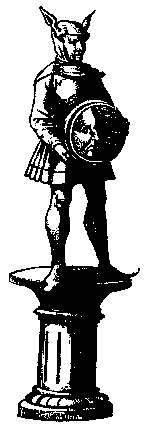
Here is an illustration From R.Verstigan, A Restitution of Decayed Intelligence, Antwerp, 1605, Ch.3 [Cited in The Leaping Hare] showing the Saxon goddess of the moon (probably Oestra), with the ears of a hare and holding a moon disk.
But there is more to this than meets the eye - as usual, the topmost layer of symbolism hides a hidden satanic meaning that was understood only by initiates. For the peasants it was merely a fertility rite, but for the initiates it was about the birth of the "seed", the sun-god whose coming would give life to mankind.
Thus the hare was also a MALE god: We say "the man in the moon" but eastern cultures refer to the "Hare (or Rabbit) in the Moon".
You can see below that the hare of Egypt was the slayer of the snake (or dragon) and thus is a counterfeit of the true SEED who would destroy the ancient serpent. Osiris was sacrificed to the Nile each year in the form of a hare to guarantee the annual flood. In Egyptian hieroglyphs, the hare stands for the sound 'wn' ('un'), meaning both 'to be' as well as 'to open'. Osiris was sometimes called Wepuat or Un-nefer and portrayed with a hare's head.
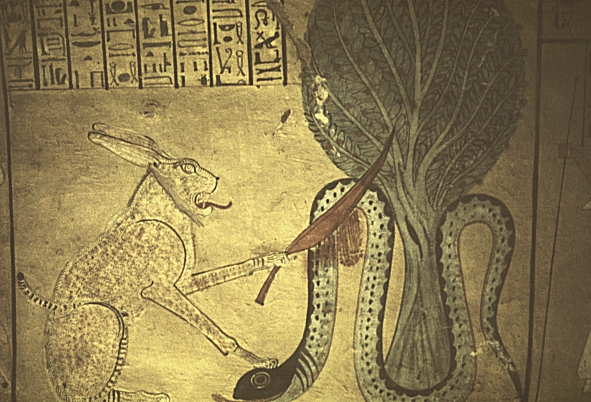
Symbolically, and in spiritual terms, the hare was the very essence of life itself. The hieroglyphic 'Wn', depicting a hare on top of a single blue-green ripple means 'to exist'. (See illustration below). But in the bible, who was it who hovered creatively over the primal waters of existence? It was GOD as the Spirit. He only is the "essence of life" and God's sacred title - as given by Himself - is "I Am That I Am" (Yahweh). (Gen 1:1-2 and Exod 3:14-15).
Therefore the hare is an idolatrous representation of the Creator God.
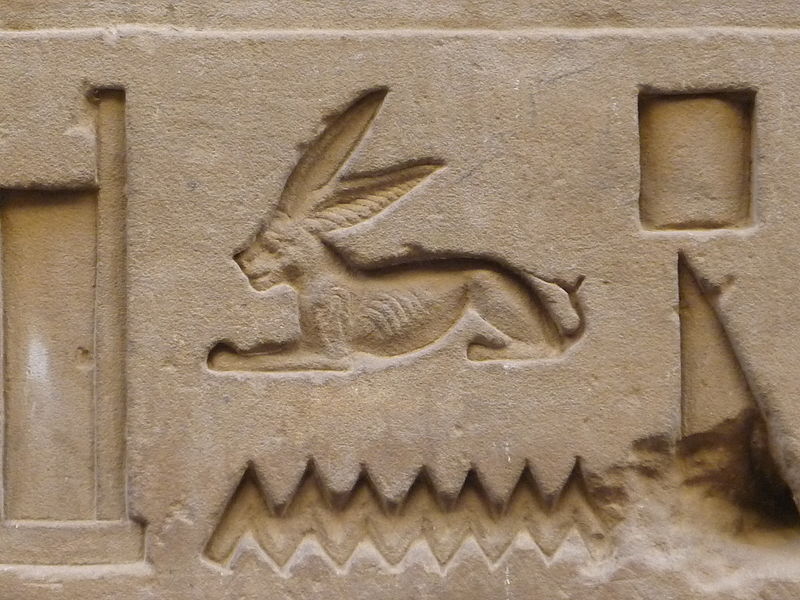
The flower associated with Easter, especially in churches, is the LILY. Why is that? People will tell you it stands for purity and virginity but what can we learn from history?
- In pagan tradition, the lily is seen as a fertility symbol (see picture).
- In the ancient Near East, the lily was Ishtar's sacred emblem
- Ishtar, also known as Astarte, was a birth-mother and fertility goddess.
- Her name is uncannily similar to that of the goddess Oestra above (who gave her name to Easter.)
- In Roman mythology white Lilies are associated with the Queen of the Gods, Juno.
- In Greek marriage ceremonies the priest places over the bride's head a crown of lilies, as a symbol of fertility.
Why The Lily?
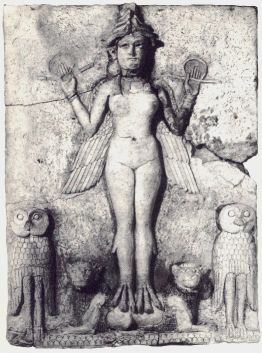 One ancient fertility goddess, identical to the
the Sumerian Innana and the Babylonian Ishtar, is called LILITH. On a famous relief pictured here (The Burney Relief footnote 1)
she stands with wings and owls just like the Queen of Heaven.
One ancient fertility goddess, identical to the
the Sumerian Innana and the Babylonian Ishtar, is called LILITH. On a famous relief pictured here (The Burney Relief footnote 1)
she stands with wings and owls just like the Queen of Heaven.
According to ancient Sumerian history, Lilith is Queen of Heaven, Lady of the Air, and Mother of the Moon. Lilith's flower was the Lily and the magical Lotus.
Rafael Patai (The Hebrew Goddess 3rd ed. 1990) emphasizes the promiscuity of a divine harlot rather than the virginal queenship of Innana. So much so that when Ishtar descended to the Nether world (an Akkadian myth parallel to the Descent of Innana), "neither man nor beast copulated; when she emerged, all of them were again seized by sexual desire."
Here we see the origin of the fertility festivals of Spring, with its symbols of birth and new life, and the customs that so often in the past involved wild orgies.
Inanna and Lilith can be compared. According to Baring and Cashford (The Myth of the Goddess 1991) it is probable that the plaque represents "Innana in her role as the goddess of sky, earth and underworld, Queen of the Great Above and the Great Below." They go on to explain that
"The Sumerian word for owl is ninna and the name Nin-ninna given to the goddess in her owl form meant 'Divine Lady Owl'. The ancient texts also give the Akkadian word KILLILI for Nin-ninna, and this name was one shared by Innana and Ishtar. Perhaps kilili is the original derivation of Lilith, who, much later, in biblical times, is called 'night-owl or screech-owl'."
Much more could be said about the owl symbol but I am trying to keep this as short as I can. But you will recall that "The Lady" Ishtar in Bablylon was also called NINNA or INNANA.
Lilith (Hebrew: לילית; lilit, or lilith) is a seducing demon or fallen woman in Jewish mythology, found earliest in the Babylonian Talmud (completed between 500  and 700 AD/CE ). The semitic root L-Y-L layil in Hebrew, as layl in Arabic, means "NIGHT".
and 700 AD/CE ). The semitic root L-Y-L layil in Hebrew, as layl in Arabic, means "NIGHT".
Lilith is believed to be a creature that is essentially a succubus, in that she seduces men and eats children. According to Hebrew legend Lilith was the first woman to be created. She originated in Sumerian mythology as a goddess of desolation, and appears in Babylonian, Greek, and Arab myths, and is utilized in modern satanic and wiccan rites.
There is an ongoing scholarly debate as to whether the concept of Lilith occurs in the Bible. The only possible occurrence is in the Book of Isaiah 34:13-15 which is a prophecy of judgement and desolation.
It refers to the "night creature" LIYLITH. Some translations give this as "screech-owl" and some "night bird" because it is not known exactly what the Hebrew word means. Nonetheless, it is a direct reference to the LILITH of the later Hebrew mythology.
Looking at this picture of a lily, sacred not only to Easter but to the catholic Virgin Mary and the Lady Goddess, we need to ask what it depicts in anatomical terms of seduction, fertility and birth. I leave you to ponder.
 Despite efforts by the Church to sanctify this sweet bun, it cannot be denied that it is part of pagan religion and goes back to ancient times. The sacred "bourn" or "bun" is something I exposed in the Christmas study and it would save space not to repeat all the material here. Please go to this page.
Despite efforts by the Church to sanctify this sweet bun, it cannot be denied that it is part of pagan religion and goes back to ancient times. The sacred "bourn" or "bun" is something I exposed in the Christmas study and it would save space not to repeat all the material here. Please go to this page.
In brief it was an offering to the dying sun-god and the rising seed, and also a way of selecting the victim for sacrifice.
The symbol is not that of the crucifixion cross. The solar cross, or equal-armed cross (often within a circle), is a very ancient symbol meaning the four quarters of the earth, the four seasons, the four elements and the yin-yang balance of male and female. At the Spring festival, the sun had returned to balance after the chaos and fear of winter.
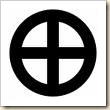 The Solar cross is probably the oldest religious symbol in the world, appearing in Asian, American, European, and Indian religious art from the dawn of history. Composed of a equal armed cross within a circle, it represents the solar calendar - the movements of the sun, marked by the solstices. Sometimes the equinoxes are marked as well, giving an eight armed wheel. The swastika is also a form of Solar cross.
The Solar cross is probably the oldest religious symbol in the world, appearing in Asian, American, European, and Indian religious art from the dawn of history. Composed of a equal armed cross within a circle, it represents the solar calendar - the movements of the sun, marked by the solstices. Sometimes the equinoxes are marked as well, giving an eight armed wheel. The swastika is also a form of Solar cross.
The sun cross in its most simplified form (shown alongside) is known in Northern Europe as Odin’s cross, after the Chief God of the Norse pantheon. The word “cross” itself comes from the Old Norse word for this symbol: kros.
Pagans who worshipped the goddess Oestra/Ostara (who gave her name to Easter) ate small cakes decorated with a cross at the spring festival. As can be seen from this illustration, the cross in a circle was also used by the Sumerians.
festival. As can be seen from this illustration, the cross in a circle was also used by the Sumerians.
King IA, pictured here in horned headdress, holds a vessel above which hovers a wheel cross. The cross seems to be contained within the shape of a crescent moon. Some scholars believe that in the ancient Sumerian notion of the divine couple, God was personified as the sun, and his consort was personified as the moon.
The king, as living representative of God on Earth, or son of God, was perceived to be their offspring, and constituted the third member of the divine trinity. The image of the sun cross within the moon may well symbolize the divine couple.
Many today choose just to eat hot cross buns and not bother with the symbolism. You may take this course of action, even after knowing what they originally stood for, or you may choose to avoid them. The bible gives us liberty to act within our own conscience on such things.

I think we open ourselves to ridicule when we try to christianise Easter Eggs. Especially, it's hard to explain to anyone why rabbits "lay eggs" at Easter and why children hunt for them.
Of course, as with Christmas, it's nice for the children to hunt for and eat chocolate eggs and bunnies. But do they associate that with Easter and forget all about Jesus who died on the Cross for their salvation? Probably so!
I've looked at the Easter Bunny (the Hare) and in that section explained how the moon-goddess brings forth her son, risen from the underworld. The sun returns to the world from its journey in darkness to give new life and hope.
That alone shows how the goddess as a hare gives birth to the brightly-coloured or golden egg. The golden chick who emerges from this egg is of course the counterfeit saviour-god in the story of Osiris and Isis, ishtar and Tammuz and other pagan myths.
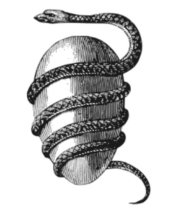
However, the egg itself figures in mythology and ancient religion as a picture of the world and its creation - the meaning appears to be identical to the hare as the pagan version of the Creator. A world egg or cosmic egg is found in many creation myths. Typically, the world egg is a beginning of some sort, and the universe or some primordial being comes into existence by "hatching" from the egg, sometimes lain on the waters of the Earth.
- The Sanskrit term for it is Brahmanda (Brahm means 'Cosmos' Anda means 'Egg').
- The Rig Veda uses a similar name for the source of the universe: Hiranyagarbha, which literally means "golden fetus" or "golden womb".
- In Chinese mythology, the universe began as an egg. A god named Pangu, born inside the egg, broke it into two halves: the upper half became the sky, while the lower half became the earth.
- The oldest creation myth of Egypt tells of Ra being born from an egg laid by a goose - later, by an Ibis.
- The "world tree" or ASH on which Odin hung is the YGGDRASIL, (pronounced egg-draw-sill).
From this we see that the gold-covered egg is really the sun-god who is considered to be the prime mover of the universe, the first god and lord of creation.
The purpose of this study is not to spoil anyone's fun and enjoyment, nor to put a damper on any innocent worship that Christians take part in at Easter.
As with the Christmas study, I recognise that beliefs differ and it is up to the individual conscience to accept or reject any aspect of a festival. I make the same observation here as I did there: the bible calls Christians to give up legalistic feasts and rites for worship and move on to to a more genuine spiritual understanding of what Jesus did for us. The "shadow" of the old should not be regarded as having any more significance.
At the same time, we have the liberty of Christ to choose whether or not we take part in the world's fesitvals.
I would like you to consider this passage of scripture in two equally-valid ways. One, the command to avoid the old legalistic practises that have been superceded; but two, the freedom to stand in our choices (made in full knowledge and understanding) without being judged by others.
On the one hand, since you have been delivered from the old worldly regulations and feasts, why do you want to participate in them? But also, if you do - since they are meaningless - why do you allow yourself to be judged for your participation? I will end by allowing the word of scripture to settle all arguments about Easter:
Col 2:16-23
16 So let no one judge you in food or in drink, or regarding a festival or a new moon or sabbaths,
17 which are a shadow of things to come, but the substance is of Christ.
18 Let no one cheat you of your reward, taking delight in false humility and worship of angels, intruding into those things which he has not seen, vainly puffed up by his fleshly mind,
19 and not holding fast to the Head, from whom all the body, nourished and knit together by joints and ligaments, grows with the increase that is from God.
20 Therefore, if you died with Christ from the basic principles of the world, why, as though living in the world, do you subject yourselves to regulations --
21 "Do not touch, do not taste, do not handle,"
22 which all concern things which perish with the using -- according to the commandments and doctrines of men?
23 These things indeed have an appearance of wisdom in self-imposed religion, false humility, and neglect of the body, but are of no value against the indulgence of the flesh.
Footnotes
(1)The Burnley Relief (named for the antiquities dealer who owned it in 1935) is one of the most important works of art from the Ancient Near East. This terracotta plaque (37 cm wide by 49.5 cm high) is of undoubted authenticity and has been dated by the British Museum to 1800 B.C. According to the British Museum web site it "equals the Stele of Hammurabi in quality of execution but surpasses it in iconographical quality."
© 2013 Tricia Tillin-Booth. All rights reserved. Birthpangs Website: http://www.birthpangs.org/ This document is the property of its author and is not to be displayed on other websites, redistributed, sold, reprinted, or reproduced in printed in any other format without permission. Websites may link to this article, if they provide proper title and author information. One copy may be downloaded, stored and/or printed for personal research. All spelling and phraseology is UK English.
